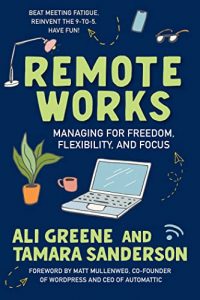There’s No “Magic Formula” to Write a Book
There’s No “Magic Formula” to Write a Book
 I wish I could give you a magic formula for how to write a book. That if you have the perfect morning routine, follow the Artist’s Way, or join the right writers’ group, then bam, it will happen. A book will appear, and it will be a bestseller to boot.
I wish I could give you a magic formula for how to write a book. That if you have the perfect morning routine, follow the Artist’s Way, or join the right writers’ group, then bam, it will happen. A book will appear, and it will be a bestseller to boot.
I’m here to tell you that’s not true. Trust me; I’ve written two books with friends and have one published book to show for it. Instead of sharing a magic formula, I’ll tell you the three things I learned along the way.
Know yourself
There are lots of ways to write a book and so many excellent resources to help get you started. Ultimately, though, you need to find something that works for you. While there are a million ways to put words on a Word document, you still need the words. Otherwise, there’s no book.
For example, one of the most common pieces of writing advice is to start your day with writing for an hour every morning. The problem? I’m a notorious night owl, something we discuss in our book about energy management and productivity. (Check out the free guide here.) You can imagine my frustration when I tried this and failed—even after joining an accountability group on Zoom to get me up and writing in the mornings.
Through this experience, I realized I had to find a way to write that kept me happy and motivated. For me, this meant writing in “sprints” when I felt inspired, lasting anywhere from several hours to several days; afterward, I’d take a much-deserved break—lounging around in my pajamas, reading, and binge-watching TV. It also meant I started my days later and wrote into the night. I designed my writing schedule around my natural ebbs and flows.
Use Design Thinking for Writing
Through trial and error, I found that I needed structure, not a routine to get my creative juices flowing. As I looked for models outside of the writing world, I landed on a “design thinking” approach, which I learned as a designer at IDEO.
There are five steps in the process of design thinking. First, you write a brief, a one- to two-sentence summary of your project. When writing Remote Works, I had an overall brief for the book (e.g., “the ultimate remote work playbook for teams”) and also created one for each chapter (e.g., “how to manage your time”).
Next comes research! Honestly, this is my favorite part; it’s a divergent stage where you get to explore. I interviewed people, surfed the internet, read related books, collected quotes and ideas, and read through my Evernote clips and Tumblr posts. Next, it’s time to synthesize your research, grouping your learning into themes that form an outline.
The fourth step in this process is to ideate. Create a framework, flesh out an outline, and start putting the puzzle pieces together by incorporating relevant research within the outline.
The writing finally starts during the last step: prototype, test, and refine. Thankfully, I wrote Remote Works with my friend and business partner, Ali Greene, so we took turns. One person would write a first draft and then hand it over to the other, who would add new content and restructure the draft.
It was not until we’d moved into the editing stage that we refined the chapter, which meant proofreading, improving sentence structure, and deleting redundancies.
Setting expectations and developing a Writer’s Mindset
When you decide to take on a creative project as daunting and time-consuming as writing a book, creating a film, or designing a video game, you have to lean into a paradox. You need to truly care that what you’re making matters to sustain you for the long haul. Without that drive and vision, sitting down and doing the creative work is difficult.
For my coauthor and me, that meant the larger vision of remote work. When done well, it can change individuals’ lives for the better, and then collectively, it can enable a world where we can finally design work to fit our lives after decades of planning our lives around work.
However, once you put your creative act into the world, you lose your sphere of control. You are no longer the ruler and creator of your creative project (and thus the creative world).
Instead, reception is left in the hands of others—whether that be an agent, a critic, or a reader. At that point, you must let go and remember that even if you touch a few people’s lives with your work, it is worth it.
When I give a talk about creating a remote work sanctuary, and a few audience members come up afterward feeling inspired, I know I’ve done my job. If someone reads part of our book and quotes it on LinkedIn, it’s reaching someone. And maybe those are the people it was designed for in the first place, and who knows, perhaps they’ll be the ones to one day change the world.
—
Tamara (Tam) Sanderson is the cofounder of Remote Works, an organizational design and consulting firm with a mission to liberate teams from the nine-to-five and teach them how to do their best work anytime, anywhere. Her book, Remote Works: Managing for Freedom, Flexibility, and Focus, is available on Amazon and is distributed internationally through Penguin Random House. She can be found at remoteworksbook.com.
Remote Works: Managing for Freedom, Flexibility, and Focus by Ali Greene and Tamara Sanderson
 The future of work is here. You can no longer survive by copying and pasting old office techniques into a digital environment; it’s exhausting, unproductive, and unsuccessful. There is a better way! Are you ready to rethink everything you know about how remote works?
The future of work is here. You can no longer survive by copying and pasting old office techniques into a digital environment; it’s exhausting, unproductive, and unsuccessful. There is a better way! Are you ready to rethink everything you know about how remote works?
Drawing on their years of experience working at remote companies DuckDuckGo and Automattic, plus dozens of interviews with leading experts, Ali Greene and Tamara Sanderson have written the ultimate playbook for managing remote teams.
This book addresses challenges such as communicating effectively (with fewer meetings!), eliminating frustration over what tools to use, establishing team norms, and focusing on getting things done. You will learn how to work best remotely and create a workplace designed for freedom, flexibility, and focus.
For decades, we’ve planned our lives around our work. Now it’s time to intentionally design work to fit our lives.
BUY HERE
Category: Contemporary Women Writers, How To and Tips























